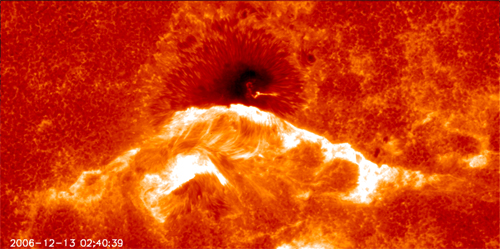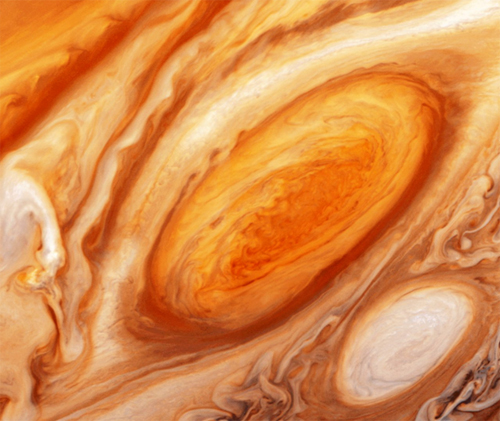From Earth to the Solar System
From Earth to the Solar System (FETTSS) is a collection of images for exhibitions that showcase the excitement of planetary exploration—our journey to understand the origin and evolution of the Solar System, and our search for life elsewhere. The images are at once artistic and informative, weaving together themes in astrobiology, planetary science, and astronomy. Including contributions from backyard astronomers, large telescopes in space, and even point-and-shoot cameras of field researchers, the collection represents the current state of exploration as seen through the eyes of the scientific community.[1] http://fettss.arc.nasa.gov/.
The FETTSS public science program is an effort to bring astronomy images and the science behind them to audiences in unique public science outreach locations. The traveling FETTSS exhibit is going to Texas, Washington, DC, Georgia, Florida, Illinois, Missouri, Iowa and Puerto Rico, among other sites. Location types being targeted include libraries, malls, train stations, parks, nature centers, waterfront walkways and similar public spaces. FETTSS is staying at each location for about a month. In conjunction with this, a tactile and Braille all-weather poster series mounted on still styrene is providing additional connections with the FETTSS materials. The 8 images for the Braille/tactile poster series include:

This view of the western hemisphere of Earth from space combines day and night data from two satellites. The boundary of Earth is shown with a thick circular outline, and the borders of North, Central and South America are shown with a thin solid line. In this image, the eastern part of the hemisphere is in daylight, but the western part is still in darkness. Lights, shown as small dots, represent the brightest cities that are visible from space.
Image: Data-AVHRR, NDVI, Seawifs, MODIS, NCEP, DMSP, Sky2000 star catalog; AVHRR & Seawifs texture-R. Stockli; Visualization-M. Jentoft-Nilsen

As Earth orbits the Sun, the Moon travels about Earth. Sometimes the Moon passes through Earth’s shadow in space and observers on Earth witness a lunar eclipse. The image below shows the progression of a total lunar eclipse; read from right to left. The Full Moon is seen in step #1. The eclipse begins in step #2 when the Moon enters Earth’s shadow on the Moon’s left half. Step #3 shows the Moon hidden in Earth’s shadow. Step #4 shows Earth’s shadow retreating on the right side. Finally, the Full Moon is seen again in step #5 when the eclipse has completely ended.
Image: Akira Fujii/Ciel et Espace

On Earth, “weather” means things like rain, wind and changes in temperature. The Sun experiences a different kind of weather. Its powerful magnetic field lines become twisted. When hot plasma from the Sun is expelled in large eruptions, it can create features called prominences. This image taken by NASA’s Solar Dynamics Observatory reveals a loop prominence at about the ten o'clock position.
Image: NASA/Solar Dynamics Observatory

When the Sun is very active, it produces darker areas called sunspots. The darkest part of the sunspot is in the center and is surrounded by a lighter area. When energy builds up near sunspots, it may be released through explosions called solar flares. These flares often take on the shape of a ribbon. On Earth, we feel the effects of solar flare eruptions through disruptions in satellite communication and through colorful sky displays called auroras.
Image: SAO, NASA, JAXA, NAOJ

Comets are called “dirty snowballs” because they are made of ice, rock and dust. When a comet comes near the Sun, it heats and forms a gas tail and a dust tail. The Sun’s energy flows toward the comet, forcing the tails to point away from the Sun. Once the comet moves away from the Sun, the tails shrink until the comet returns to an icy ball in space.
Image: Dan Schechter

Jupiter's Great Red Spot is an enormous storm that could fit almost three Earths across itself. Winds at the edge of the spot can reach up to 350 miles per hour. The Great Red Spot may have been viewed through small telescopes on Earth since the 1600’s but we didn’t get a close-up view until NASA’s Pioneer 10 spacecraft made its flyby in 1974.
Image: NASA/JPL

The thousands of thin rings which surround Saturn consist of billions of individual particles of mostly water ice which exhibit waves, wakes and other structures. NASA’s Cassini mission to Saturn observed an icy plume on Saturn’s moon Enceladus, which may be contributing material into one of the rings.
Image: NASA/JPL/Space Science Institute

Vesta was discovered in 1807 and is the brightest asteroid visible from Earth. It orbits the Sun from the asteroid belt, located between Mars and Jupiter. Asteroids are smaller than planets, have irregular shapes and are too small to retain an atmosphere. Vesta is 326 miles (525 km) in diameter. Craters of different sizes cover the asteroid’s surface. This close-up image of Vesta was taken in July 2011 by NASA’s Dawn spacecraft.
Image: NASA
This project was developed with funding from NASA under contract NNM07AB07C. Hinode is a Japanese mission developed and launched by ISAS/JAXA, with NAOJ as domestic partner and NASA and STFC (UK) as international partners. It is operated by these agencies in co-operation with ESA and the NSC (Norway). Additional support was provided from NASA under contract NAS8-03060. The Chandra X-ray Center is operated for NASA by the Smithsonian Astrophysical Observatory.
Contact Kim Arcand (cxcpub@cfa.harvard.edu) for details on requesting the FETTSS Tactile/Braille posters.